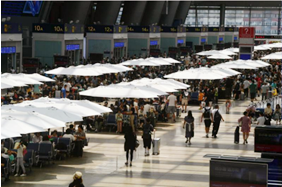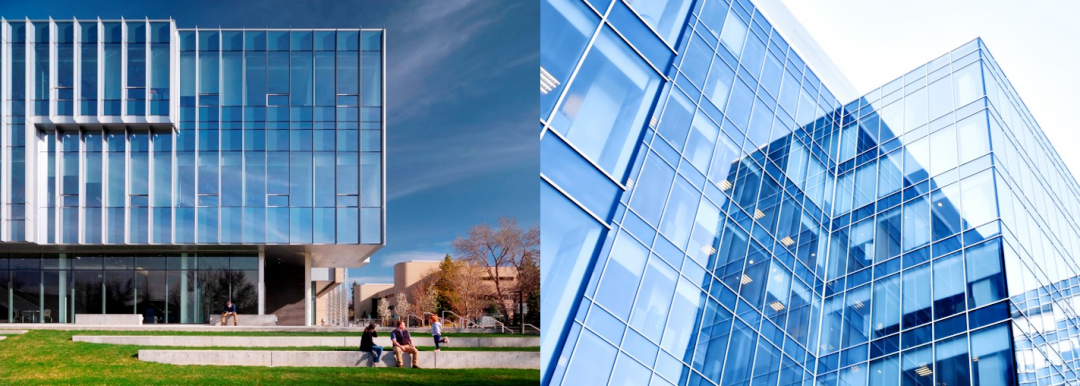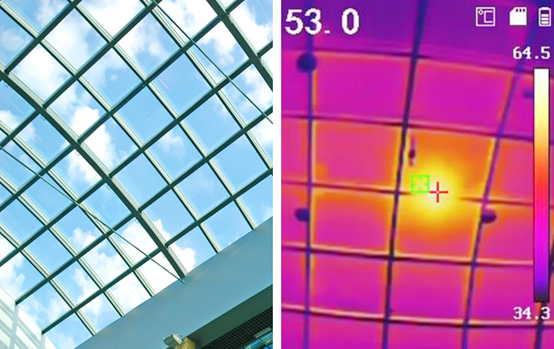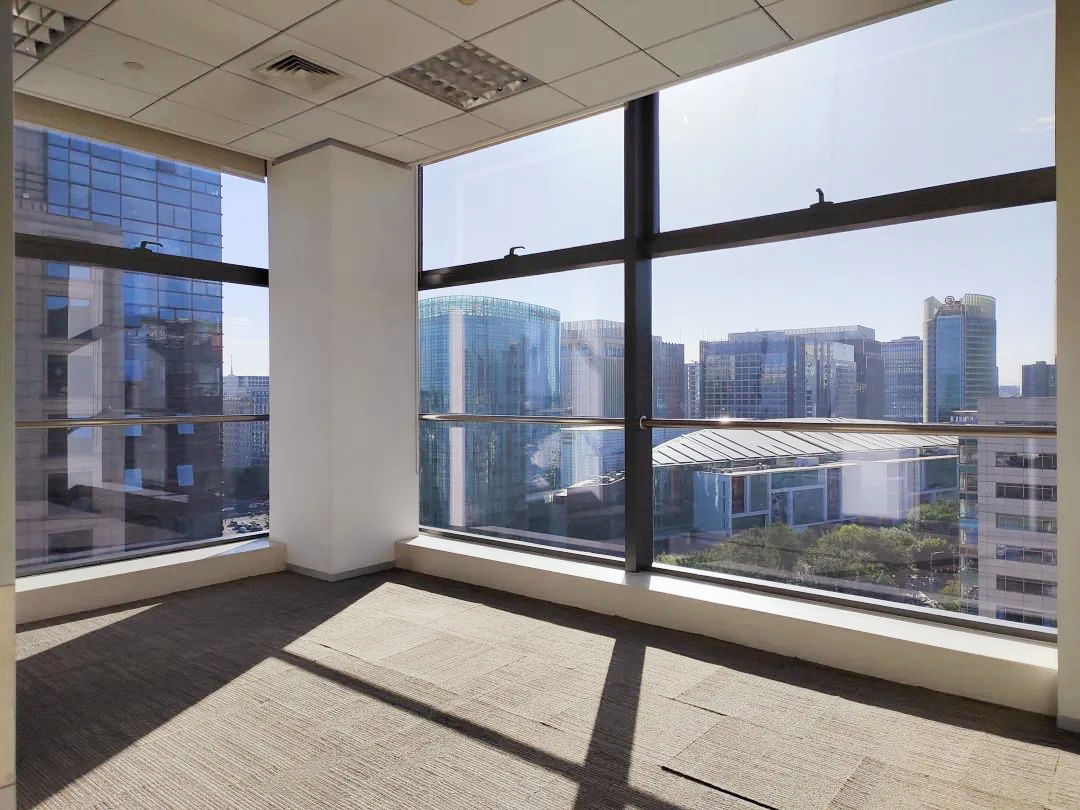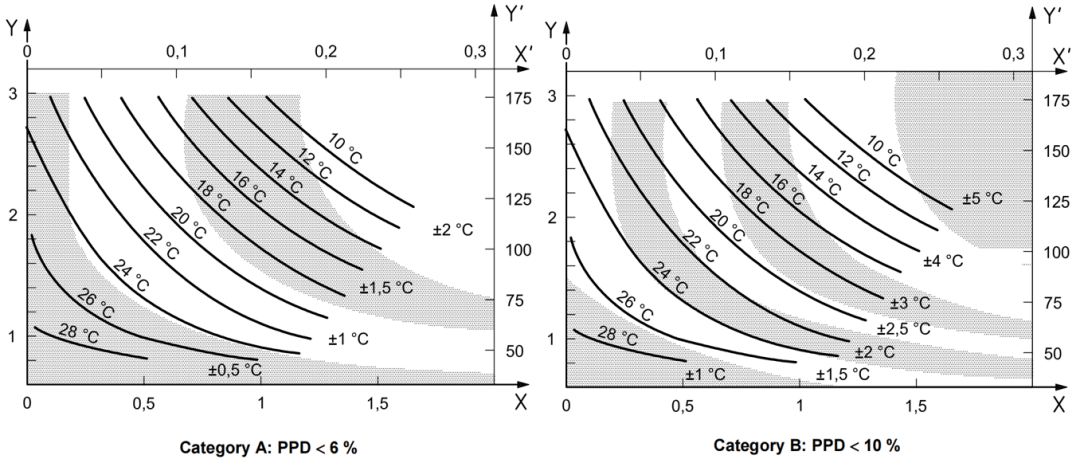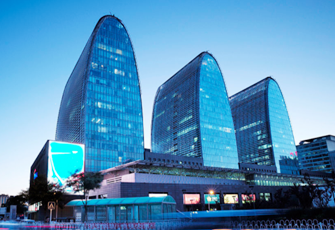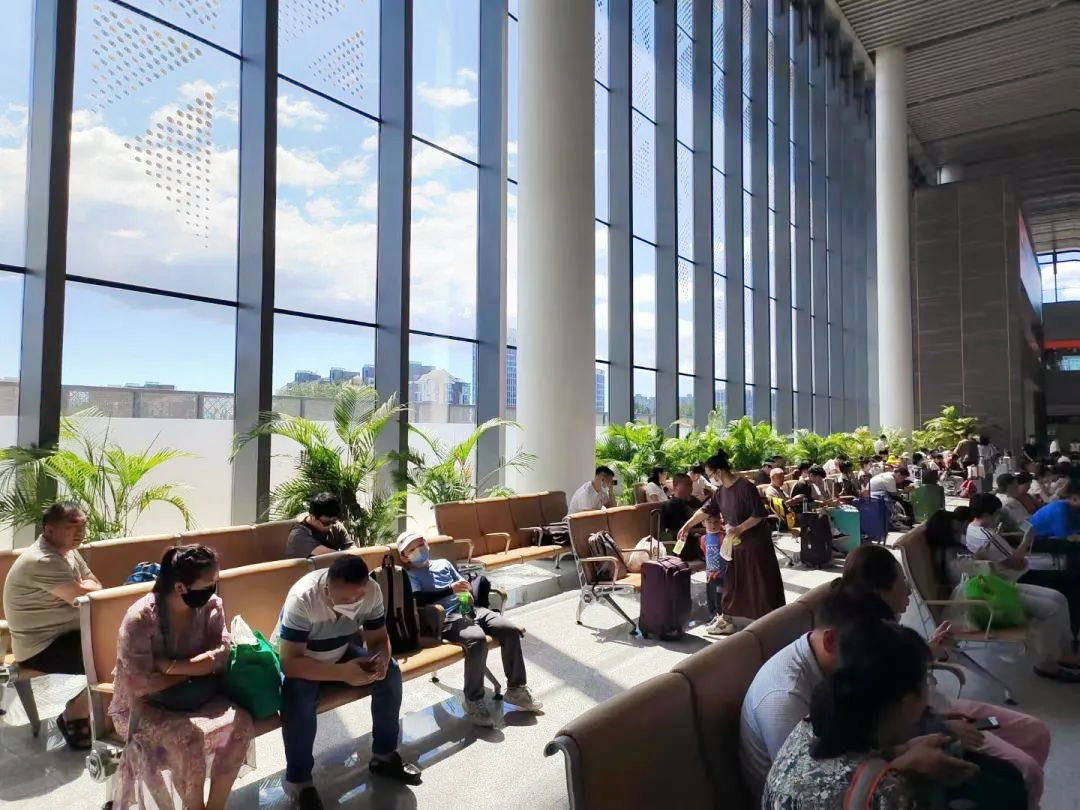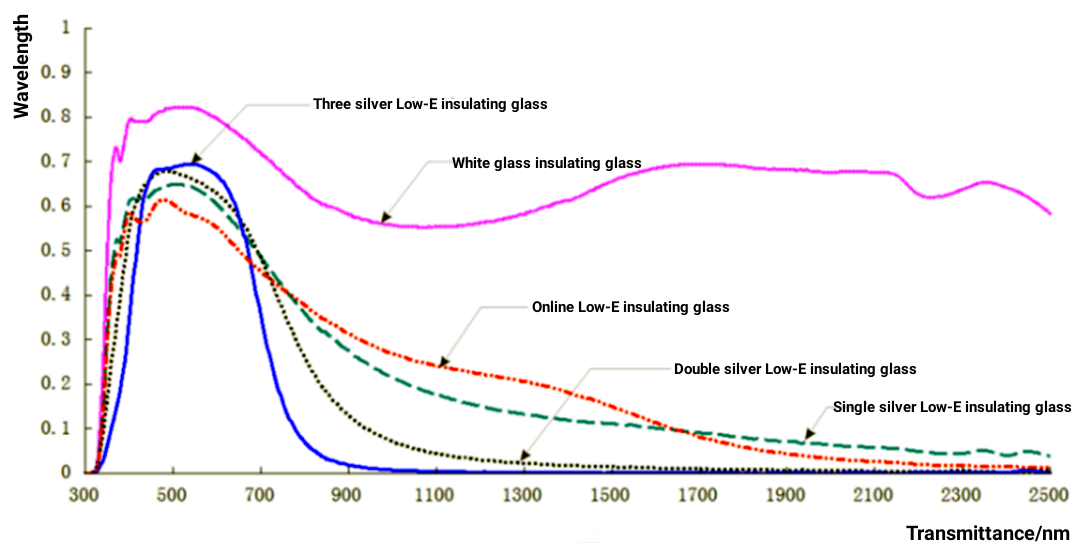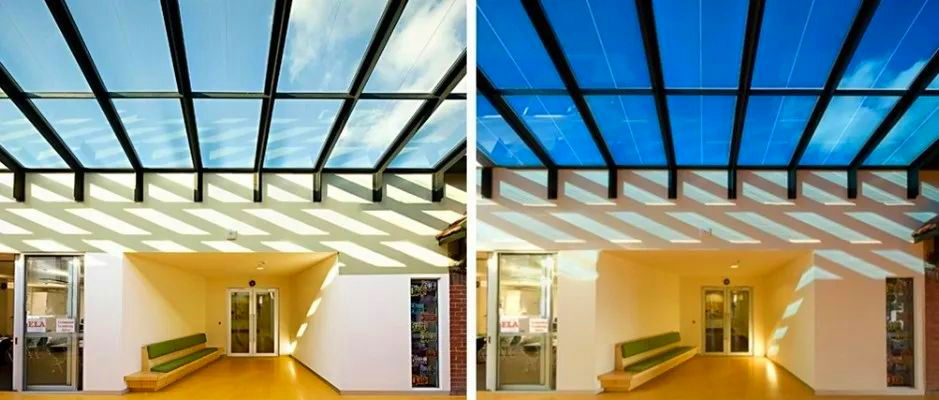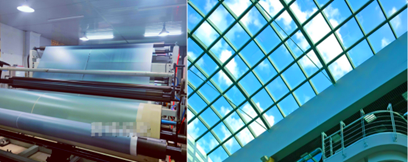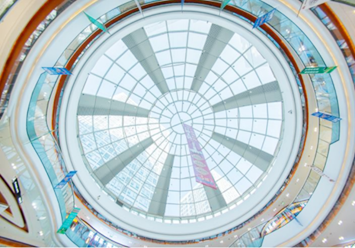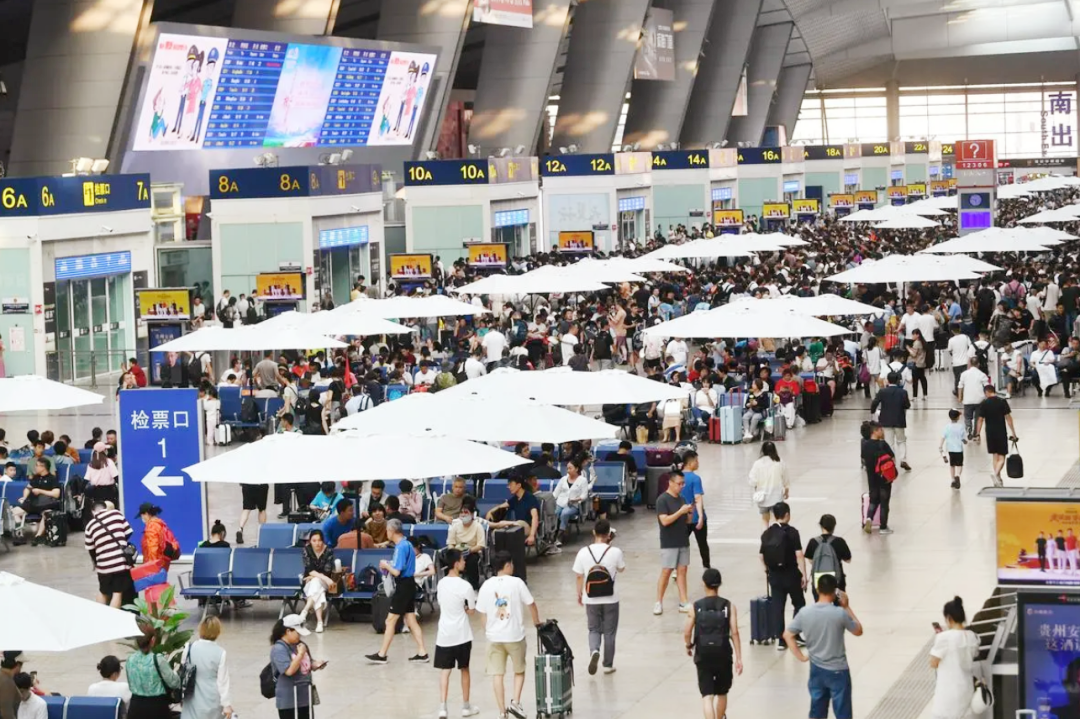How to alleviate the problem of "local space overheating" in glass curtain wall skylight buildings?
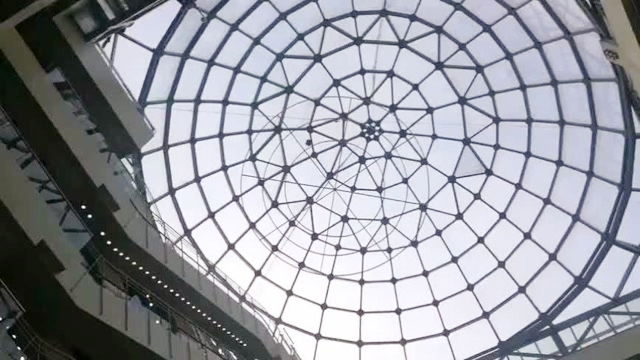
Every summer in the northern hemisphere, we often encounter the problem of "local space overheating" in glass curtain wall buildings, especially in recent years. What are the typical scenarios of "local space overheating" indoors, why does this problem occur, and how to solve it? This article will focus on the reasons for the phenomenon of "space overheating" at the top of the glass lighting in glass curtain wall buildings, and how to solve this problem.
1. Background
The "local space overheating" of glass curtain wall daylight-roof buildings has become a hotly searched topic in recent years, and we often receive related inquiries. A typical scenario is as follows:
Scenario 1: Taking the summer in the northern hemisphere as an example, the mid- and high-latitude areas continue to experience high temperatures of 40°C. To alleviate the discomfort of passengers under the sun, dozens of "parasols" were set up in the waiting hall of a railway station, which caused a stir in the local area. TV stations continue to pay attention.
Scenario 2: In an office building, when the sun shines in the afternoon, the temperature in the west-facing office is too high. Although the air conditioner is turned on to the lowest temperature, it is still difficult to work for a long time.
Scenario 3: XX Plaza, a large area in the middle uses a glass lighting roof. When the sun is directly irradiated, the inner surface temperature of the lighting roof is too high, causing thermal discomfort to the merchants or customers on the top floor.
It can be said that the "local space overheating" of glass curtain walls and daylight roof buildings has become the focus of everyone's attention.
2. Why does this happen?
Why do glass curtain wall buildings have the problem of "local space overheating"? This is related to the heat transfer of the glass curtain wall lighting roof building and the thermal comfort of the human body.
The outdoor temperature continues to be high in summer, and heat is transferred indoors through the lighting roof of the glass curtain wall. The main ways are (1) solar radiation transmission, which is related to the solar heat gain coefficient SHGC value; (2) temperature difference transfer, which is related to the heat transfer coefficient K value; (3) Air convection heat transfer is related to air tightness. Among them, direct solar radiation transmission is the most important way for heat to enter the room in summer.
Taking the northern hemisphere as an example, due to the decoration style, many office buildings facing south and west inevitably have some small space offices. In summer, the sunlight is directly exposed, causing the room temperature to be too high. Even in winter, some rooms in the south-facing office buildings are too hot.
Residential houses also have similar problems. The south-facing second bedroom of a certain house only has about 10 m2. In winter, heating is combined with direct sunlight at noon, causing the room to overheat. Windows need to be opened from time to time for ventilation to lower the indoor temperature and improve thermal comfort.
Speaking of thermal comfort, the authoritative research information at home and abroad is mainly "Ergonomics of Thermal Environment Analyzes, Measures and Interpretations of Thermal Comfort by Calculating PMV and PPD Indexes and Local Thermal Comfort Criteria" [1].
In the standard, PMV and PPD are used to represent the overall thermal or cold discomfort of the human body. However, thermal dissatisfaction can also be caused by unintentional cooling or heating of specific parts of the human body. This is local discomfort. The standard provides local thermal discomfort. Parameter range.
The most common causes of local discomfort given in the standard are wind sensation, excessive vertical temperature difference between the head and ankles, too hot or too cold floor, too high asymmetric radiation temperature, etc.
In summer, the "local space overheating" of glass curtain wall daylighting roof buildings is mainly related to the high indoor temperature and the high asymmetric radiation temperature. There is no need to explain that the indoor temperature is too high.
Many people have conducted experimental studies on the impact of asymmetric radiation on human thermal comfort, such as Nielsen, Gage, Mcnair and Biddison, Hall and Clem (Klemm) et al.
The results show that within the range of asymmetric radiation that may be involved in ordinary thermal environments, it will not adversely affect the comfort of the human body; when the wall temperature exceeds the air temperature by 30°C, obvious discomfort caused by asymmetric radiation will occur [2].
3. How to alleviate this situation?
The problem of "local space overheating" in glass curtain wall skylight buildings is mainly related to temperature difference transmission, air tightness, and direct sunlight. Solar radiation is the main factor, so we consider reducing the solar radiation entering the room as much as possible.
So what are the ways to deal with it?
Method 1: External sunshade glass doors and windows (louvers, hard roller blinds, awnings)
There are also various forms of external sunshades for buildings, such as sunshade louvers, hard roller blinds, awnings, etc. Because the external sunshade blocks heat from the outdoor side and takes it away through airflow, the sunshade effect is the best.
The disadvantage of an external sunshade is that it requires a special sunshade and the cost is high. Considering the safety of external sunshade, it generally needs to be reliably connected to the structure, so most of them need to be designed in an integrated manner during construction.
Method 2: Low-E Glass
Low-E glass has a certain sun-shading effect, especially double silver and triple silver Low-E glass, which is particularly suitable for new buildings.
Using Low-E for thermal insulation is the most common form. The typical spectral curves of common ordinary glass, single silver Low-E insulating glass, double silver Low-E insulating glass, and triple silver Low-E insulating glass are shown in the figure below.
The solar spectrum band is 300-2500 nm, of which 380-780 nm is the visible light band, and 780-2500 nm is the near-infrared band, which is the main source of our burning sensation under direct sunlight.
As can be seen from the picture above, compared with white glass, Low-E glass can greatly reduce the solar transmission in the 780-2500 nm band, thereby changing the hot light of the sun into "cold light".
Of course, different Low-E glasses have different shading effects. Three-silver Low-E glass has the best effect, but the cost is also high. The mainstream Low-E glass currently on the market is double silver Low-E glass, and its sunshade effect is considered excellent.
In addition to its good thermal insulation effect, Low-E glass also has a good thermal insulation effect, which prevents indoor heat from transmitting to the outdoors, especially in the large-area centralized heating areas in the north.
Due to the high cost of glass replacement and renovation, Low-E glass is particularly suitable for new buildings. Of course, it is also suitable for old building facades to be demolished and replaced with new ones.
Method 3: Built-in sunshade insulating glass
Built-in sunshade insulated glass is also a new type of building energy-saving glass. It has a sunshade built into the insulated glass and is a form of glass body sunshade.
According to the structure of the built-in sunshade glass, it can be divided into Venetian blinds, pleated blinds, honeycomb blinds, roller blinds, combination curtains, etc. Currently, curtain wall doors and windows are mainly built-in blind insulating glass; the control methods include manual door curtains and electric door curtains.
Like Low-E glass, built-in sunshade insulating glass is mainly used in new buildings and can be considered during energy-saving renovation of existing buildings.
In addition, LIJIANG Glass has introduced the production method of insulated glass with a built-in sunshade on the previous page. Please go to the previous page to learn more about the production process of insulated glass with built-in sunshade.
Method 4: Electro/thermochromic glass
Electro/thermochromic glass is also a new type of energy-saving glass that has emerged in recent years.
Electrochromic glass is particularly suitable for areas with active control requirements, such as residences and office buildings. People have active adjustment needs. It mainly includes PDLC (polymer dispersed liquid crystal), SPD (suspended particles), EC (inorganic all-solid-state), and DLC ( Dye liquid crystal) four technical routes.
Thermochromic glass is suitable for public spaces such as large airport terminals and high-speed rail station waiting halls. When the surface temperature rises when exposed to sunlight, it changes to an opaque state to provide sun protection. After the sunlight passes, the temperature decreases and returns to a transparent state.
Method 5: Insulated laminated glass
Thermal insulation laminated glass is based on ordinary PVB interlayer film, using nano-functional materials to evenly disperse and fuse, retaining the optical, mechanical, and bonding properties of ordinary PVB interlayer film, while adding sun protection and heat insulation functions.
Nano thermal insulation PVB interlayer film is mostly used in new buildings such as sunrooms and lighting roofs and the renovation of existing buildings.
In addition, LIJIANG Glass has introduced the production method of insulating laminated glass on the previous page. Please go to the previous page to learn more about the production process of laminated glass.
Method 6: Glass film
Glass insulation film is a type of building energy-saving film. On the one hand, it can reflect solar heat energy; on the other hand, it can absorb part of the solar heat energy and then transmit it to the outdoors through the heat insulation film.
Glass insulation film can generally block 40%-80% of heat, effectively filtering outdoor strong light and radiation. The light entering the room will not cause a burning sensation on the skin, thus improving the indoor thermal environment.
Method 7: Glass coating
Glass insulation coating is also a new type of glass energy-saving transformation technology. The basic principle is that part of the solar heat energy is absorbed by the glass insulation coating and then transferred to the surrounding environment through secondary radiation.
Similar to film, glass insulation coating can generally block 40%-80% of heat. By filtering outdoor strong light and radiation, the light entering the room will not cause a burning sensation on the skin.
Glass thermal insulation coating is particularly suitable for the heat insulation and energy-saving transformation of glass lighting roofs, especially special-shaped glass lighting roofs.
Method 8: Sunshade roll film (window curtain)
Sunshade roll film is a new type of sunshade and heat insulation product that has appeared in China in recent years. It uses polymer polyester film as the base material and combines frames, connecting devices with curtain wall doors and windows into a whole.
The sunshade roll film can efficiently reflect solar radiation heat to the outdoors; it uses the frame, curtain, and transmission device to form a closed mechanism to eliminate the gap between the window curtain and the wall and block the heat convection between the window curtain and the indoor air.
Method 9: Indoor sunshades
Indoor sunshades are the most common form of sunshade, usually made of fabric curtains, metal Venetian blinds, etc.
When indoor sunshades are used, sunlight has already entered the room. Although the sunshades can improve the indoor thermal environment, since the heat is already indoors, the effect is poor from an energy-saving perspective. Therefore, some standards specify The energy-saving effect of internal shading is not considered.
Method 10: Indoor “parasol”
Objectively speaking, the design of the train station is generally user-friendly. The glass dome has better lighting and a good thermal insulation effect in winter. Moreover, the railway station exemplified in this article has undergone air conditioning and lighting roof insulation renovations. It was only the extremely high-temperature weather in the summer of 2023 that affected the indoor thermal comfort. However, this is temporary. It is energy-saving all year round and cannot be used in the same way. Partial generalization.
Therefore, when encountering extremely hot weather, using indoor "parasols" can be regarded as a short-term solution, although it will affect the image a bit.
The above are 10 measures proposed by the author based on my understanding to alleviate indoor "local space overheating". However, the creation of an indoor thermal environment is a complex system project, and these methods can only partially alleviate it; to systematically solve the problem of indoor "local space" overheating, in addition to the light-transmitting enclosure structure, comprehensive measures such as air conditioning should also be considered.
4. Summary
The "local overheating" of glass curtain wall daylighting roof buildings has become a hotly searched topic in recent years. Why does the problem of "local space overheating" occur? This is closely related to the short-term strong direct sunlight and the thermal comfort of the human body.
Taking the northern hemisphere as an example, how heat enters the room in summer in the northern hemisphere is solar radiation transmission, which is related to the solar heat gain coefficient SHGC value; temperature difference transfer, which is related to the heat transfer coefficient K value; air convection heat transfer, which is related to air tightness; among them, Direct solar radiation transmission is the most important way for heat to enter the room.
From the perspective of light-transmitting enclosure structures, how to alleviate the problem of indoor overheating? Based on my understanding, the author proposed 10 methods: external sunshade, Low-E glass, built-in sunshade insulating glass, electro/thermochromic glass, thermal insulation laminated glass, glass film, glass coating film, sunshade roll film ( Window curtains), indoor sunshades, indoor "parasols", etc.
Creating an indoor thermal environment is a complex system project. Although the above methods can be effectively improved, they cannot be said to completely solve the problem of overheating of local indoor spaces. To systematically solve this problem, in addition to the light-transmitting enclosure structure, comprehensive measures such as air conditioning should also be considered.
References:[1] ISO 7730:2005, Ergonomics of the thermal environment - Analytical determination and interpretation of thermal comfort using calculation of the PMV and PPD indices and local thermal comfort criteria[S].
For more information about insulating glass processing equipment and insulating glass processing accessories, please click here to learn more.
